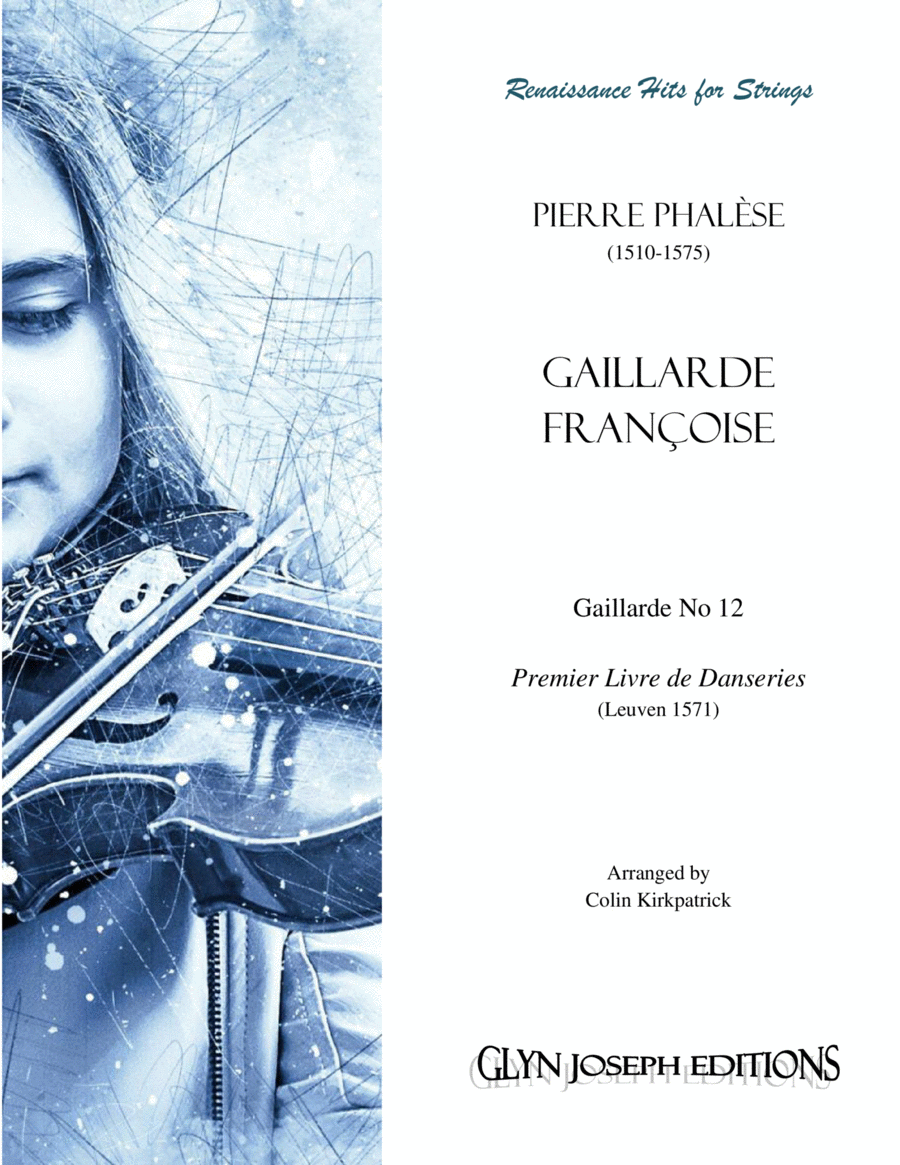String Ensemble - Level 2 - Digital Download SKU: A0.965633 Composed by Pierre Phalèse. Arranged by Colin Kirkpatrick. Renaissance. Score and parts. 17 pages. Colin Kirkpatrick Publications #571358. Published by Colin Kirkpatrick Publications (A0.965633). Following from the success of the Hits of the Renaissance for Strings, featuring well-known dances from Terpsichore by Michael Praetorius, this arrangement is from another classic book of dances from the same period. Pierre Phalèse (1510-1575) was a Flemish publisher and his First Book of Dances, an extensive collection of dances in four parts, was published in Leuven in 1571. They are attractive pieces and are sure to be popular at any concerts, public recitals or end-of-semester events. This arrangement is for virtually any string ensemble and the single PDF file includes a full score and parts for violin 1, violin 2, viola (violin 3), cello and bass (combined), keyboard and simple percussion. Two additional melody parts are provided in treble and bass clef and the chords (for optional guitar) are shown in both keyboard and bass parts. In the spirit of the original publication of 1571, you can add to the melody line any other C-pitch instruments that happen to be available. Even the additional of a couple of recorders will enhance the sound. Alternatively, you can do opposite and create a pleasing contrast by omitting instruments for certain sections. The audio demo will give you an idea how this might be achieved. While you can add flute, recorder, oboe, glockenspiel or whatever you want, additional instruments are not essential but can add contrasting tone colour. The keyboard part is intended as a guide and when possible, the keyboard player should feel free to improvise around the part and the chords shown. A piano is distinctly out of place in this music and a digital or acoustic harpsichord sounds more authentic. Most electronic keyboards have a harpsichord option. The optional percussion instruments used are similar to those found in elementary school music rooms and usually include a tambour or hand-held drum, antique (finger) cymbals, wood-blocks and tambourine. Two or three players can be used and the parts can be interpreted quite freely. Dance music is intended to be fun, and we hope that this arrangement brings you just that.
